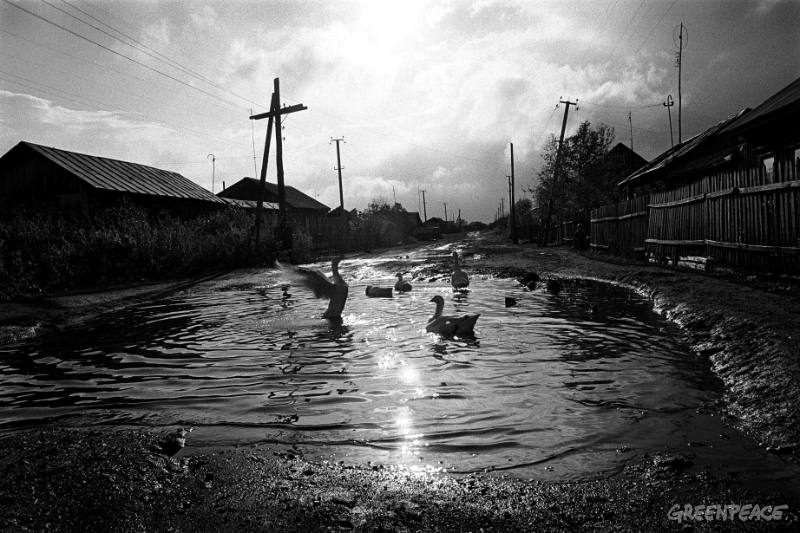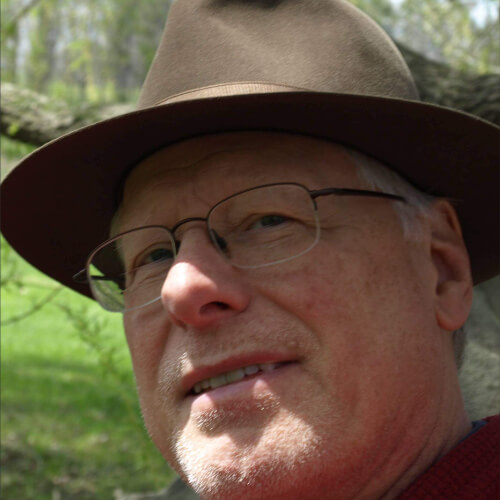
© 2000 – Greenpeace/Robert Knoth
This was one of the worst nuclear disasters in history, occuring in 1957, and the region around the Mayak plant is still the most polluted on the planet today.
The Apocalypse and After
The Conspiracy Game (Justinia Wright, PI #4) is available on a pre-publication sale this week only for 99¢. That makes for 7 Justinia Wright mysteries I’ve published. Three novels, a collection of 3 novellas, and 3 short stories. I love Tina and Harry and find their stories the easiest to write. However if all I wrote were mysteries, I think I’d become bored with writing. As the old adage goes: variety is the spice of life.
And so now I switch gears and turn my attention to one of my other loves: the post-apocalyptic tale. The Rocheport Saga currently has 5 volumes in the series and I’m working on number 6. It is the story of one man’s attempt to create paradise out of the disaster that has almost totally wiped out the human race.
The original manuscript for The Rocheport Saga is a monster over 2200 pages long. Normally I do not rewrite. I follow the practice of writers such as Lester Dent, Isaac Asimov, Robert E Howard, Robert Heinlein, and Dean Wesley Smith — get the story written and move on to the next one. Unfortunately with The Rocheport Saga my technical knowledge of surviving such a holocaust and what is possible has increased a hundred fold since I first wrote the manuscript. Therefore, rewrite I must.
The Rocheport Saga is a cozy catastrophe and I’ve written previously on the cozy catastrophe. You can find those posts here, here, and here. Over the next few weeks I’m going to present more detailed thoughts on and examples of this sub-subgenre of speculative fiction.
Apocalyptic and post-apocalyptic stories are very popular and their popularity shows no sign of abating. The current spate of zombie apocalypse tales is proof this subgenre isn’t going away anytime soon. We are fascinated by what it takes to survive. Will we survive?
I grew up in the ‘50s and ‘60s when the threat of nuclear war was very, very real. I still have those old civil defense pamphlets they handed out in grade school. To this day, I can’t figure out what hiding under a desk will do. But, hey, desperate times call for desperate measures. Right? For me the possible end of the world as I knew it was something I lived with every day. Sure it wasn’t in the forefront of my mind. After all I was a kid. But it was there, subtly, in front of me everyday implied in the newspaper, on TV, in books, and in those civil defense drills. One day, most of us might be wiped off the face of the earth.
The apocalyptic and post-apocalyptic tale is nostalgia for me, at least in part. Probably why I’m not keen on the flood of zombie apocalypse stories hitting the market. That stuff is pure fantasy. If it is fantasy I want, then I prefer the original zombie of Haitian folklore: an undead being created by the evil magic of a bokor. A supernatural being. The mindless slave of the evil wizard or witch. Robert E Howard was a master of this kind of zombie tale. “Black Canaan” being a classic zombie horror story. In fact, I class the zombie apocalypse as a horror tale and not a true apocalyptic or post-apocalyptic story. And, for me, I find the modern zombie story a laughable joke compared to the likes of “Black Canaan”.
The apocalyptic tale and the post-apocalyptic tale are different things, even though they are usually lumped together. The apocalyptic story deals mostly with the cataclysm and the events leading up to it. A classic example is the novel When Worlds Collide and the movie 2012. The emphasis there is on preparation to survive what is coming. The story can be plot or character-driven.
The post-apocalyptic story takes place after the cataclysm. Often the disaster comes upon us suddenly and we have no time to prepare for it. As in the BBC TV series Survivors and the classic sci-fi novel Earth Abides. The focus is not on the disaster, but on the survivors of the disaster. How they cope and what they do to survive in a sometimes radically altered world, such as we find in the Mad Max series, The Road, I Am Legend, and The Book of Eli. In other post-apocalyptic settings the world the survivors face is not radically different. We see this in Earth Abides, Survivors, and After Worlds Collide (where the survivors are on a very earth-like planet). Here, the story is usually character-driven and perhaps that is why I prefer it over the apocalyptic tale.
There are many apocalyptic scenarios, each one affecting the possible direction humanity and civilization might take. My favorite is the cozy catastrophe because the catastrophe is often environmental or the result of scientific interference with nature. The term was coined by Brian Aldiss to pejoratively describe a style of post-apocalyptic literature popular in post-World War Two Britain, made famous by John Wyndham’s The Day of the Triffids. On the American side of the pond, the most famous example is probably Earth Abides by George R Stewart.
In the cozy catastrophe, the disaster is not dwelt on. It happens rather rapidly and wipes out most of the human race; leaving the world essentially as is, minus the human population. The focus is not on survival so much as it is on re-building civilization and doing a better job of it this time around.
Of course what I just wrote is a broad overview and exceptions abound. But in general, I find the cozy catastrophe on the whole positive — emphasizing the hope we hold on to that we can make the world a better place in which to live.
Over the course of the next several weeks, I’ll delve into more detail as to what is and what isn’t a cozy catastrophe.
As always, your comments are welcome!
Share This!

I do watch The Walking Dead, though I do prefer the Rocheport Saga, honestly. I got bored with seeing the walkers get hit in the head, shot in the head, or knifed in the head very quickly. By the 3rd season I was bored and was about to quit the series, but then problems began to develop when contacting other groups. I became more interested in the inter-group and intra-group relationships. Season 6 ended with the cliche cliffhanger ending that really irritated me, because viewers had been waiting for a nasty character from the original comic’s issue #100 to show up all season. Everyone knew the character would beat to death with a barbed-wire wrappers baseball bat one of the most important characters, but because the producers changed plot points at times, we weren’t sure if the same character would clubbed to death. Now we have to wait six more months!
The good news, though, is that the virus that animates and slows down the rotting corpses of the walking dead has its limits. The old corpses are getting more and more rotten and eventually won’t be able to move. At the same time, they are slowly starving to death because they can’t get enough food. They are mostly a sideshow nowadays. The main plotlines now involve interactions between various groups in the area near Washington D. C. though our group started out near Atlanta, Georgia. I like this better than fighting of hordes of walking dead.
Gene Roddenberry had a post-apocalyptic set of TV movies just after Star Trek was canceled. The first one was great, the second one good, and the third passable. I do remember I really enjoyed th a first in the series. That first movie was Genesis II.
Zardoz, starring Sean Connery, was somewhat post-apocalyptic. The 1970s movies Soylent Green, Harlan Ellison’s A Boy and His Dog, Mad Max at the end of the 1970s, and others were either partially or fully post-apocalyptic. The Planet of the Apes series of movies had was shot-through with Apocalyptic themes, and it’s a pretty good series even if every successive movie had a lower budget than the preceding one. Roddy McDowell deserved at least an Oscar nomination for his role in the 4th movie, even though the film had a “movie of the week” TV feel about it. Even though the TV series that followed was soon canceled, it had some interesting features.
There is a lot that can be said about the post-apocalyptic genre. C W, you wrote an excellent short article, so I just had to share a few thoughts that came to mind.
Thanks for sharing, Philip! Much appreciated! Some of the shows you mentioned I’m not familiar with and will be checking them out!